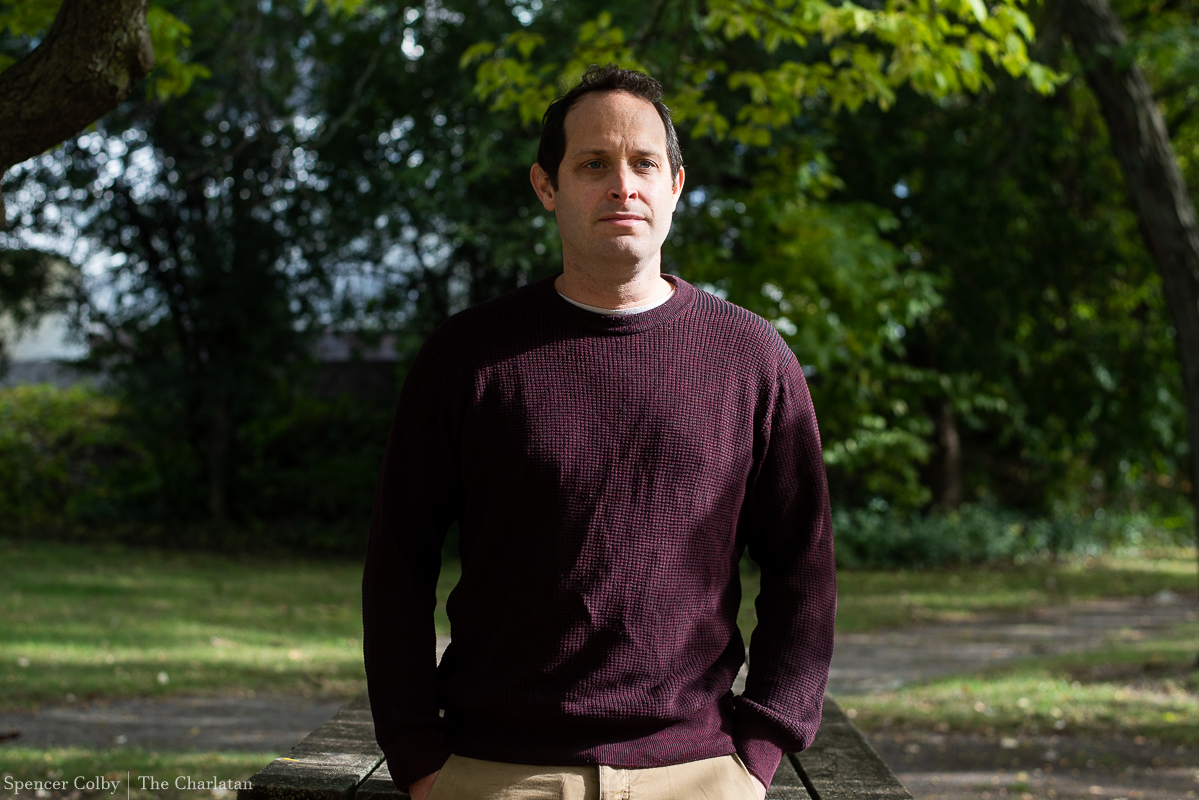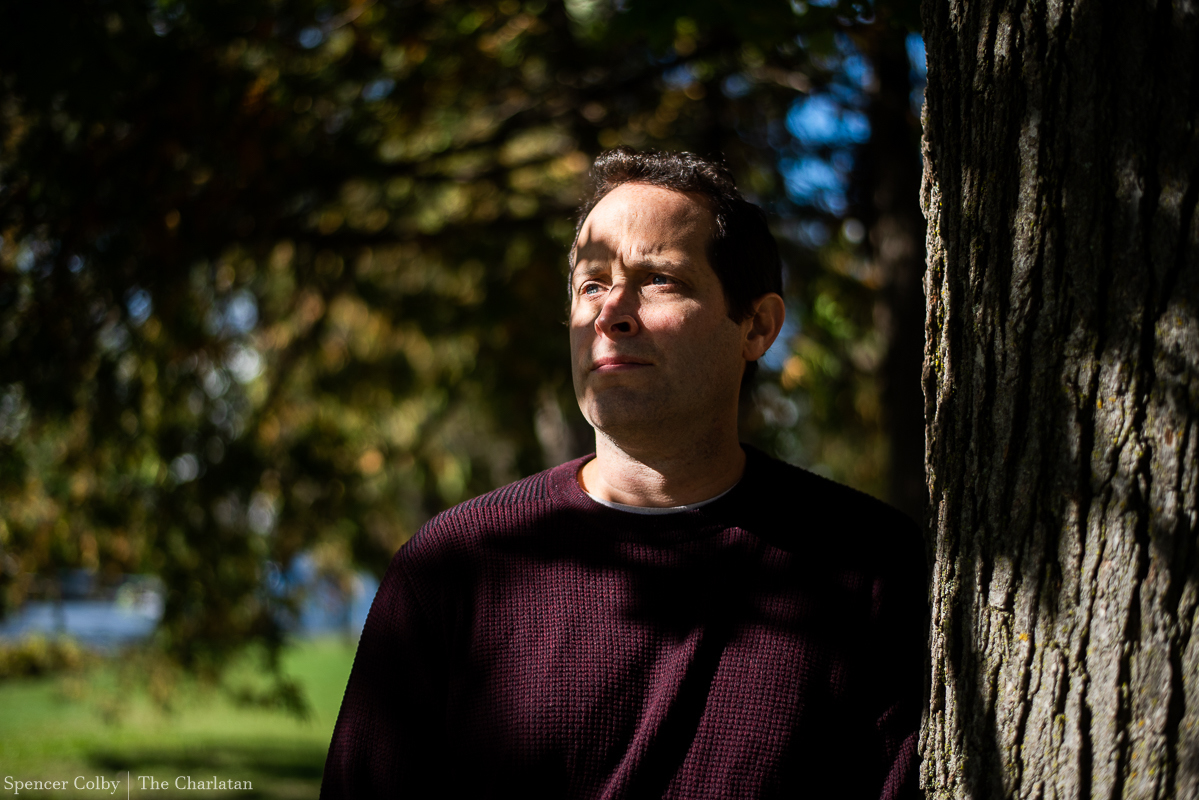
Carleton scientist-in-residence and behavioral ecologist, Shane Gero, had his research on whale culture and social behavior featured in the Emmy award-winning documentary Secrets of the Whales.
The four-part docuseries from National Geographic won the Emmy on Sept. 19 for outstanding documentary or nonfiction series. Led by director James Cameron and photographer Brian Skerry, the docuseries has been underway for three years with filming in 24 locations.
Insights from the Dominica Sperm Whale Project (DSWP), a behavioural study of sperm whales in the Eastern Caribbean founded by Gero in 2005, takes centre stage in the fourth episode titled Ocean Giants, all about sperm whales.
The idea for the docuseries came from a 2008 National Geographic project by Skerry that featured insights from Gero’s decade-long research into sperm whale families off the coast of Dominica.
“The conversations I had with Brian highlighted to him that the story was much bigger,” Gero said. “Whale culture is not only something that the public hasn’t heard of before, it’s something totally relatable and therefore could have some impact.”
Gero added the exploration of whale culture offers an avenue to inspire change as well.
“It’s a new way to look at how we protect wildlife and that was something that really rang as critical in National Geographic’s perspective,” he said. “How do we use animal culture as a means to drive conservation action?”

Changing the status: vulnerable to endangered
Polluted waters, fishing entanglements, collisions with ships and commercial whaling are all factors that threaten whales as a species. Gero said using his research for social impact and policy change is important to him.
“The most amazing thing about this series is all of the totally random emails from parents about their ocean-loving kids who were impacted by it,” Gero said. “That, to me, is the level of impact on an individual scale that a lot of science has a hard time doing.”
Gero is the whale biology lead for The Global Coda Dialect Project, a global team of scientists working to interpret sperm whale language and accelerate conservation efforts through interspecies communication.
He said this project is the most tangible piece of evidence they can bring to international conservation organizations to show how endangered the species is.
“For the past four to five years, we’ve been collecting recordings of sperm whales from around the world in dozens of sites in the ocean to create this cultural map of where all the whale clans are,” Gero said.
The current policy regarding endangered species often differentiates whales by their genetics. According to Gero, this is problematic because when counted altogether, it presents the illusion of a seemingly healthy world population of about 360,000 sperm whales.
“That seems like a lot, even though it’s a quarter of what it was before whaling,” Gero said. “When you start dividing them down into cultural groups and individual clans, the numbers are actually quite small and the trajectories are not good.”
If whales were differentiated by their cultural groups, sperm whales would be identified as an endangered species on the International Union for the Conservation of Nature’s Red List of Threatened Species, instead of as their current “vulnerable” status.
“The red listings will shift from vulnerable to critically endangered when they start defining the cultural groups as unique parts of the population,” Gero said. “That has an impact legally and should be the way we go about protecting them.”

Gero’s dedication to his research
The DSWP is the first to follow sperm whale families over time, allowing the researchers to better characterize individual whales.
Taylor Hersh is a PhD student at Dalhousie University whose thesis looks at how sperm whale dialects vary over space and time. Hersh has spent nearly nine months of her PhD in the field with Gero as part of the DSWP and credits Gero’s commitment to the project as one of its greatest assets.
“It adds a different layer to the experience when you start to know the whales as individuals and you start to recognize them and who their families are,” Hersh said. “That’s one of the things that’s really unique about the Dominica Sperm Whale Project.”
Hal Whitehead is one of the founders and co-investigators of the DSWP, as well as a Dalhousie biology professor. He has been studying deep-water whales and their social lives since 1985, aboard his 40-foot sailboat named Balaena, the Latin word for whale. He has been doing field research with Gero since his graduate studies.
“I’ve studied sperm whales for about 40 years and they still look like logs to me,” Whitehead said. “Just a tiny glimpse and [Gero] knows who it is and the whole soap opera of their relationships. That’s more than unusual, it’s unique.”
Both Whitehead and Gero stressed the importance of communicating their science to the general public and said conservation efforts depend on the will of people who need to realize that whales are “just like us.”
Whitehead said it’s thanks to Gero and his colleagues that we know what we do about whales, especially when they partake in activities that are familiar to humans.
“They suckle their young, they touch each other, they caress each other, and occasionally they seem to be pissed off at each other or with us,” he said. “You’ve got two worlds: the mammal world that we are familiar with and then this extraordinarily weird world that we don’t know as well.”
Gero was involved in shaping the narrative of the docuseries. He also helped interpret footage that focused on the behaviour and complex-yet-relatable social structures of the whales.
Gero said focusing on the story behind the imagery is what makes this series impactful.
“This could’ve easily become a series of amazing footage of what whales can do, instead of focusing the narrative on why they’re behaving that way,” Gero said. “That’s why it resonates with people.”
Featured image by Spencer Colby.





